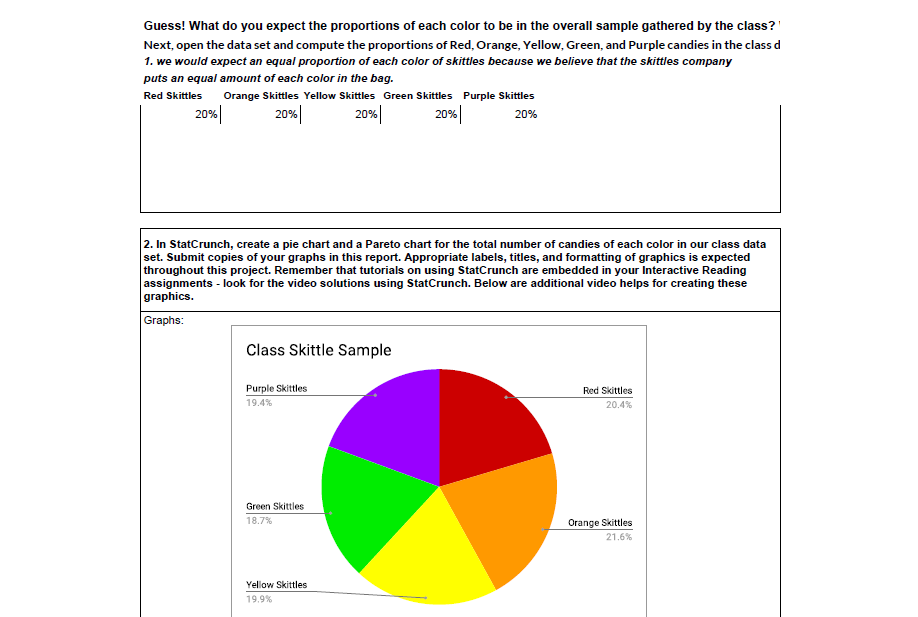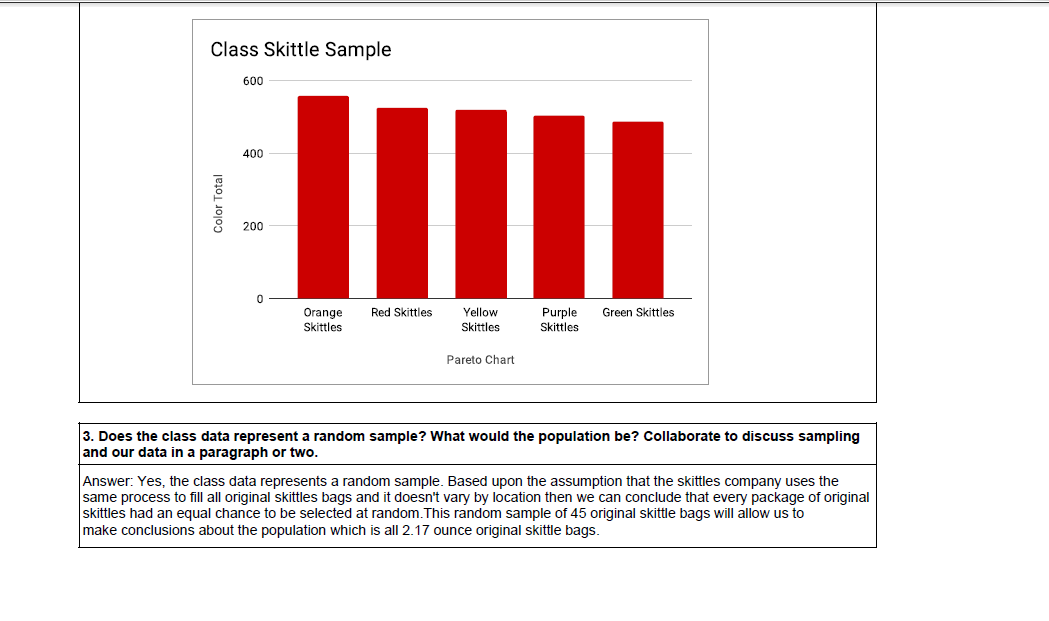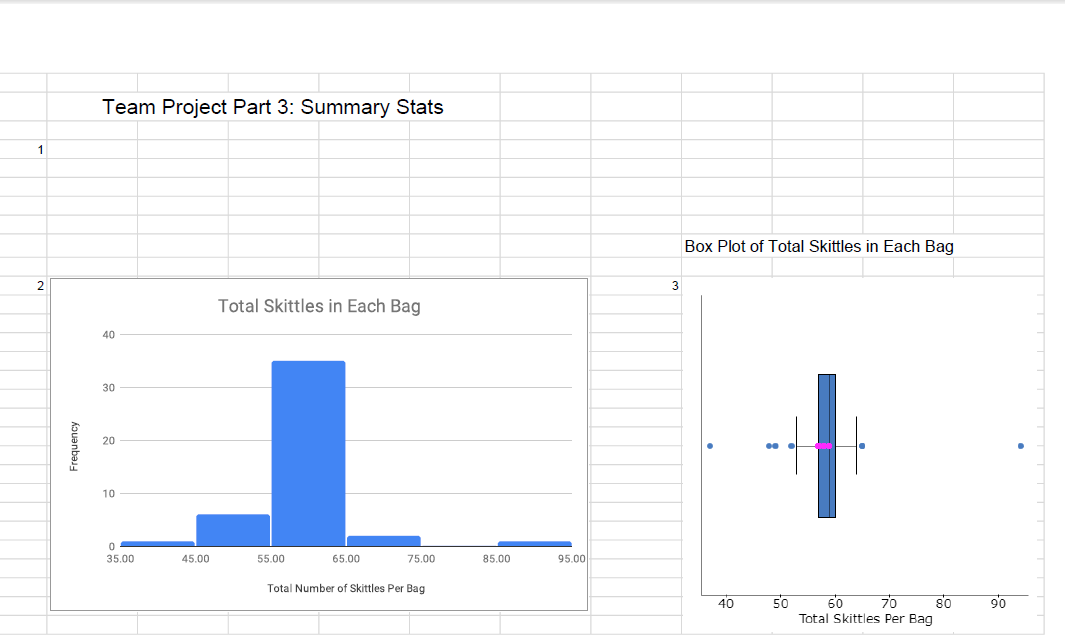





Heather Murray
Group Project Part 5
7/23/19
Over the course of this project I’ve learned how statistics goes beyond the class and can be applied in a real world setting. Using statistics to maximize production in a business, such as a candy company, is one example of how statistics can be applied in a manner very similar to our skittles project. Statistics can help you identify overweight candies with mean confidence intervals. Say, for instance, a company is producing 60 pounds of candy a day. However, their sales only account for 50 pounds of product a day. If the unaccounted 10 pounds of daily product is actually due to overweight candies, a mean confidence interval would be able to help them identify this problem. It would show them the range of average candy weights for their candies, exposing the fact that, for example, 40% of their candies are 0.1 gram overweight. Once they were able to identify the problem, they could then correct it by changing the way they produce candy so as to not make overweight candies, thus, increasing profits.
Another way that this project will benefit me in the future is by allowing me to analyze my finances. I can better compare interest rates when deciding who to invest with my money with and also when applying for a home loan. If I need to save money, I could better identify areas to limit my spending by computing the average amount of money I spend on eating out, pleasure shopping, and entertainment. I could then compare the monthly averages for each of the afore mentioned categories and identify the category I spend the most money in, and then limit myself in that category. I could set a goal of reducing spending in that category by 25%. I could then continue to track my average monthly spending and reduce my frivolous spending and save money to be used in a more meaningful way.
I’ve always enjoyed statistics. I love that we have access to all the SLCC databases, which is a place where I can really dig into real life statistics. I really enjoy looking up statistics on diet, vaccines, exercise, education, and many other random categories I’m interested in. I realize my views may be considered controversial by many, however, after looking into the statistics on vaccine injuries I was able to make a more educated decision when deciding what vaccines to give my children. Before I had this information, I felt like I had no choice in the matter. Being armed with the knowledge that my child has the same chance—about 1 in 10,000—to be severely affected from catching measles (this was during the recent measles outbreaks) as they would from receiving anesthesia in the hospital, and then comparing that to the approximate 1 in 900 children who have an abnormally adverse reaction to the Measles Mumps and Rubella (MMR) vaccine, I was able to make the right decision for my child in that matter. Had I not been able to compare the statistics I probably would have allowed my family to pressure me into giving my, then, 9-month-old son the MMR vaccine 3 months before the doctors recommended. Statistics have and will continue to be a useful tool for me to use in all kinds of situations.